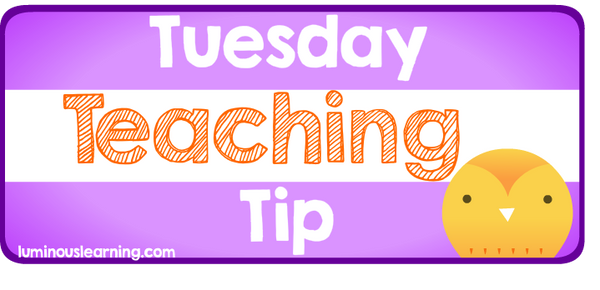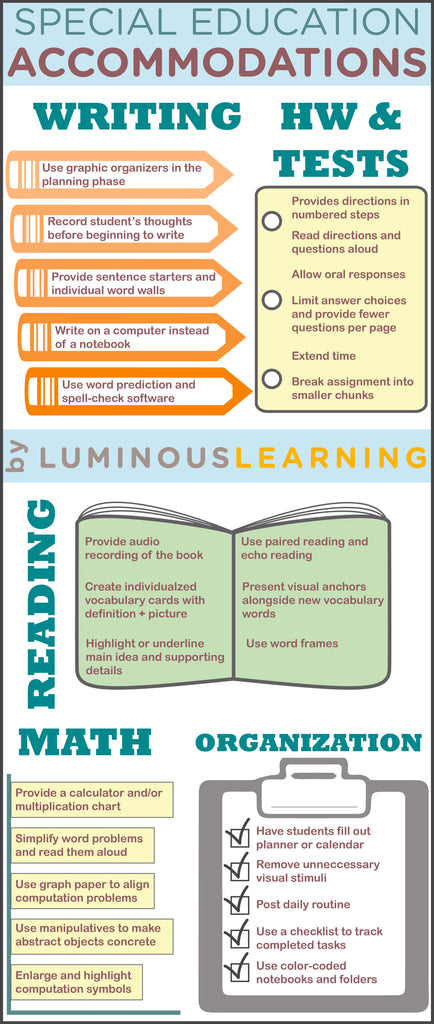Special Education Accommodations

Accommodations vs. Modifications: Are they the same?
In order to make the general education curriculum accessible for our special education students, we implement many classroom supports, including accommodations and modifications. While both are valuable tools we can use to help our students learn, they differ in the following ways:
Accommodations are changes to the classroom environment, assignment, or exam without changing the content or the standards the student is expected to master. The student is still expected to demonstrate their understanding of the same material as their peers, but they are given supports by altering the way the information is presented or how the student responds. For example, a student with dyslexia may struggle to decode a text on their grade level. As an accommodation, the teacher can provide the student with an audio copy of the book and graphic organizers to help the student record and comprehend the content in the book. Accommodations can be applied content areas, such as math, reading, writing, and social studies. In addition, you can create accommodations for exams, homework and classwork assignments, organization, time management, behavior, and the classroom environment.
Modifications are changes to the content being taught. Oftentimes, the amount or complexity of material the student is expected to master is reduced. For example, we might modify an exam by reducing the number of questions.
Here are some examples of accommodations for special education students in math, reading, writing, homework & tests, and organization:

What are some accommodations you've used in your classroom? Share below!

